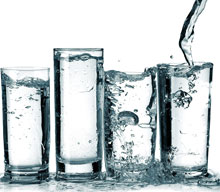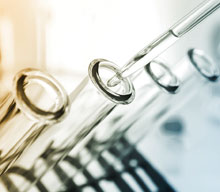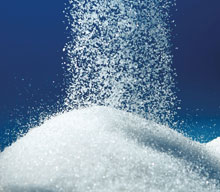The Problem
Heavy Metals in Wastewater
Use of heavy metals is unavoidable in numerous branches of industry and industrial applications. Because heavy metals are usually extremely toxic to man and environment alike, strict environmental regulations are often enforced to limit their concentration in wastewater (and exhaust air). In order to comply with these regulations, the wastewater is usually neutralized with caustic soda solution or lime. The heavy metals precipitate as insoluble hydroxides and can thus be removed. However, these methods frequently fail, due to the presence of complexing agents that interfere with the precipitation of hydroxides, or even completely prevent it.
The Result
Heavy metal limits cannot be achieved.
Heavy metals are defined as metals with a high density (> 3,5-5 g/cm3). They are natural elements that can’t be degraded or destroyed. Only their chemical and physical properties can change (such as by forming soluble or insoluble compounds). Complexing agents are substances that are capable of keeping metals in solution.
The Solution
Precipitation with PS-117
PS-117 reacts with heavy metals to form extremely stable, virtually insoluble heavy metal-PS-117 compounds. It forms a solid that is easy to separate. PS-117 also produces good results when hydroxide precipitation exhibits little or no effect. THE RESULT: Heavy metal limits can be achieved
The Product
PS-117
PS-117 is a ready-to-use aqueous solution of a blend of different trisodium salts, an organosulfide that represents the active agent. PS-117 is used to precipitate monovalent and bivalent heavy metals from wastewater (including cadmium, copper, lead, mercury, nickel and silver) that are dissolved and bound in complexes. It can be used effectively even where the complexing agent prevents these metals from precipitating as hydroxides.
The Advantages
PS-117 IS EFFICIENT
Effective over a wide pH-range, in both alkaline and acidic environments. Easy and inexpensive to integrate into existing wastewater treatment plants. Avoids expensive secondary treatments. The thermally stable heavy metal-PS-117 compounds are suitable for spray-drying processes.
PS-117 IS SAFE TO HANDLE
Ready-to-use solution that is safe to store
No decomposition products
Odorless
No dangerous substances
PS-117 IS ENVIRONMENTALLY FRIENDLY
Favorable toxicological and ecological characteristics forms compounds that are difficult to elute and safe to dump in landfills Adding small amounts (50ml/m³) of the organosulphide PS-117 to the heavy metal waste water solves this problem: The precipitation will be completed, and the remaining residues of e.g. cadmium, copper, lead, mercury, nickel, or silver are reduced to an extremely low level.
In order to achieve the best performance, the pH-value of the treated waste water should be adjusted to a neutral/slightly alkaline range. The precipitate of PS-117 with heavy metals can be easily flocculated and separated, similar to the corresponding hydroxides.
Physical properties
| Form | : | Liquid |
| Colour | : | Colourless to yellowish |
| Odour | : | Almost odourless |
| Density | : | approx. 1.12 g/cm³ |
| pH-value | : | approx. 12.3 |
| Melting point | : | -3° C (27° F) |
| Boiling point | : | 101° C (214° F) |
| Viscosity | : | 1.6 mPa * s |
| Electrical conductivity | : | approx. 60 mS/cm |
PS-117 is environmentally friendly favourable toxicological and ecological characteristics
1. What is PS-117 used for?
PS-117 is used to precipitate single and bivalent heavy metals such as Ag, Cd, Cu, Hg, Ni and Pb from waste water streams. If the effluent, however, contains heavy metal complexes which can not be eliminated as hydroxides due to neutralization, PS-117 can be used for precipitation.
2. Where is PS-117 used?
In particular, PS-117 has shown high efficiency in the treatment of effluents/waste water from metal working, chemical, photographic or mining industry and especially from thermal processes (municipal-, hazardous waste, sludge/biomass incinerators and power plants).
3. What are the benefits of PS-117?
PS-117 has very favourable toxicological and ecological properties compared to all other precipitating agents. PS-117 is practically not toxic for fish and water fleas (Daphnia magna, EC50 4224 mg PS-117 /l*). PS-117 is not mutagen and shows no acute toxicity against bacterial population. The toxicity to green algae is low. PS-117 has good storage stability and is a safe product. Should PS-117 accidentally come into contact with acids only minor amounts of hydrogen sulphide and no carbon disulphide are released and the acidic form of PS-117 would precipitate, which is practically insoluble in water. This reaction is reversible and the PS-117 sodium salt can be achieved again by the addition of caustic soda. PS-117 is not a dangerous substance within the meaning of transport regulations.























